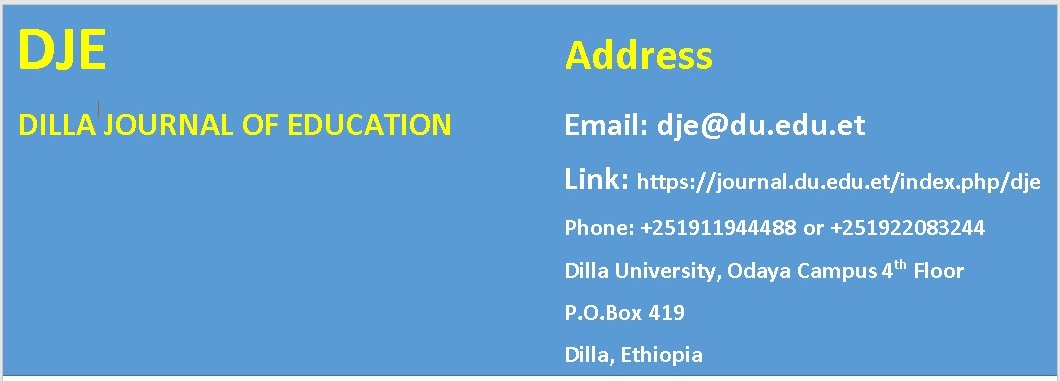The Relationship between Students Speaking Achievement and Foreign Language Speaking Anxiety
DOI:
https://doi.org/10.20372/dje.v01i01.06Keywords:
Anxiety, foreign Language anxiety, foreign language speaking anxiety, speaking achievementAbstract
This study set out to examine the key factors that contribute to speaking anxiety and to explore how such anxiety relates to students’ performance in oral communication. A total of 135 grade 12 students, drawn randomly from both the social science and natural science streams at Hawassa Addis Ketema Preparatory and Secondary School, participated in the study. Data were collected using a 28-item Foreign Language Speaking Anxiety Scale (FLSAS) questionnaire alongside an achievement test designed by the researcher. The achievement test served to measure speaking performance, while Pearson’s Product Moment Correlation Coefficient was employed to determine the relationship between anxiety and performance. In addition, an Independent Samples t-test was applied to assess whether significant differences exist between male and female students in terms of anxiety levels and achievement scores. Findings revealed four main causes of speaking anxiety: oral examinations, learners’ self-evaluation of speaking ability, comparison with peers, and fear of being negatively judged. Results further indicated a strong negative correlation between students’ speaking anxiety and their speaking performance. However, no statistically significant gender differences were found in either anxiety levels or achievement outcomes.






